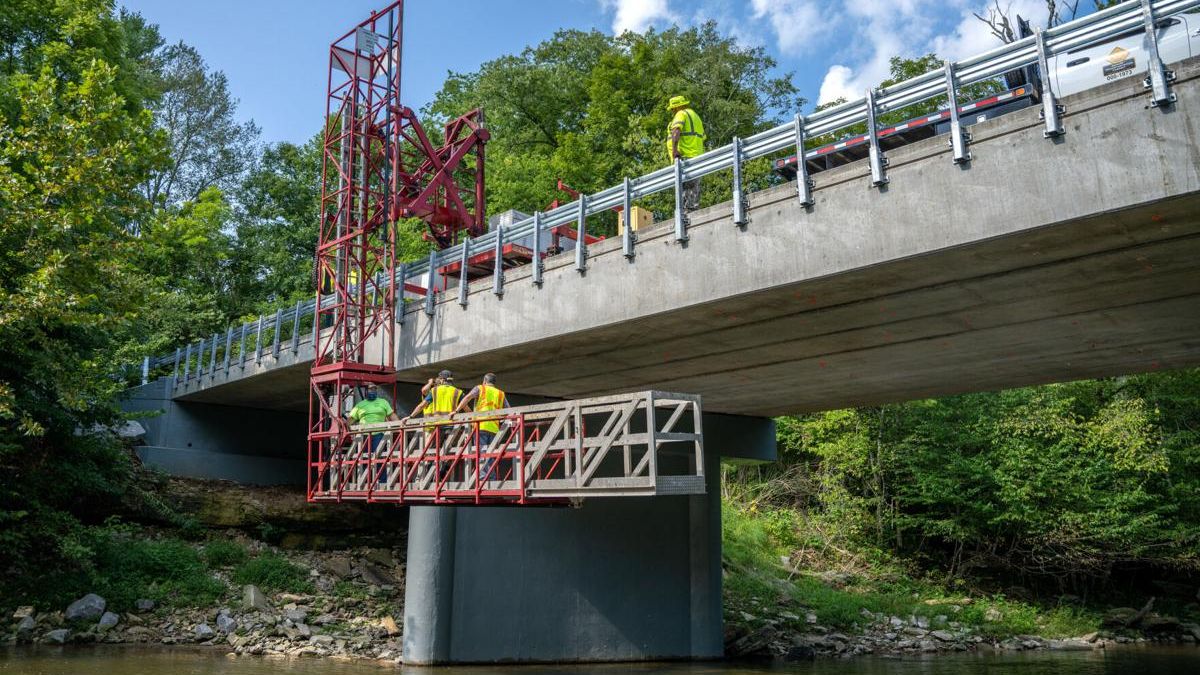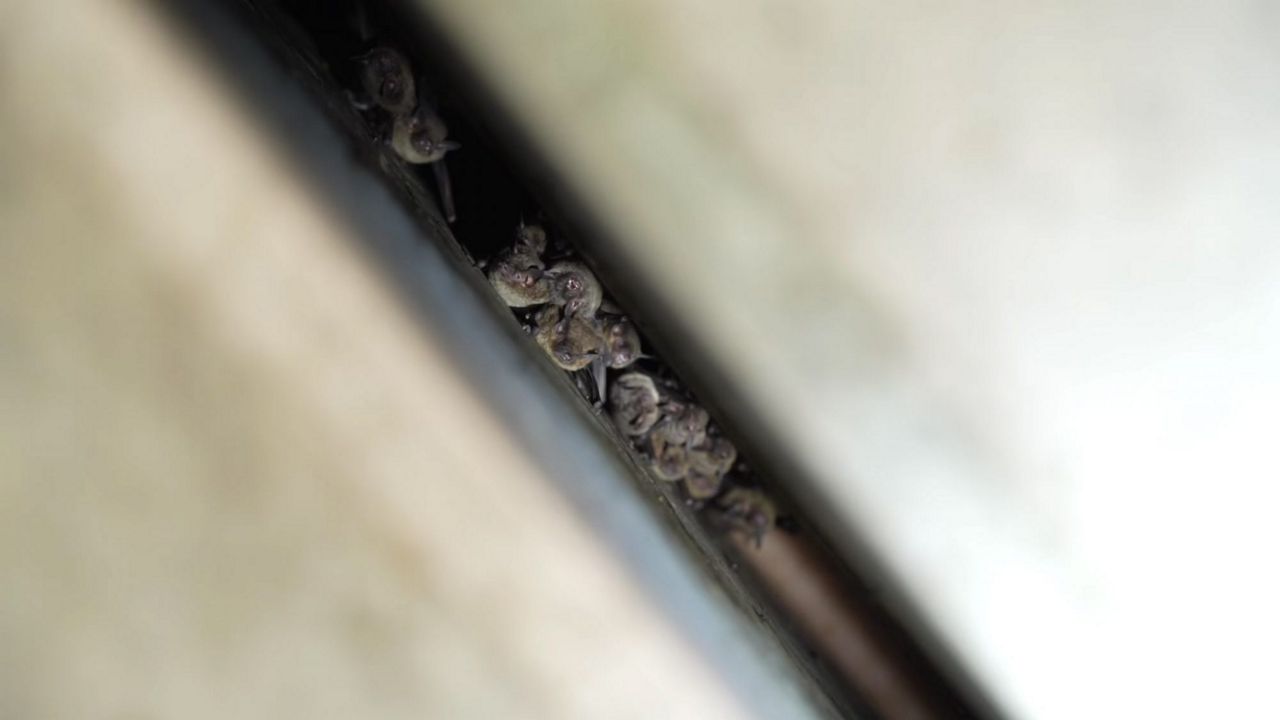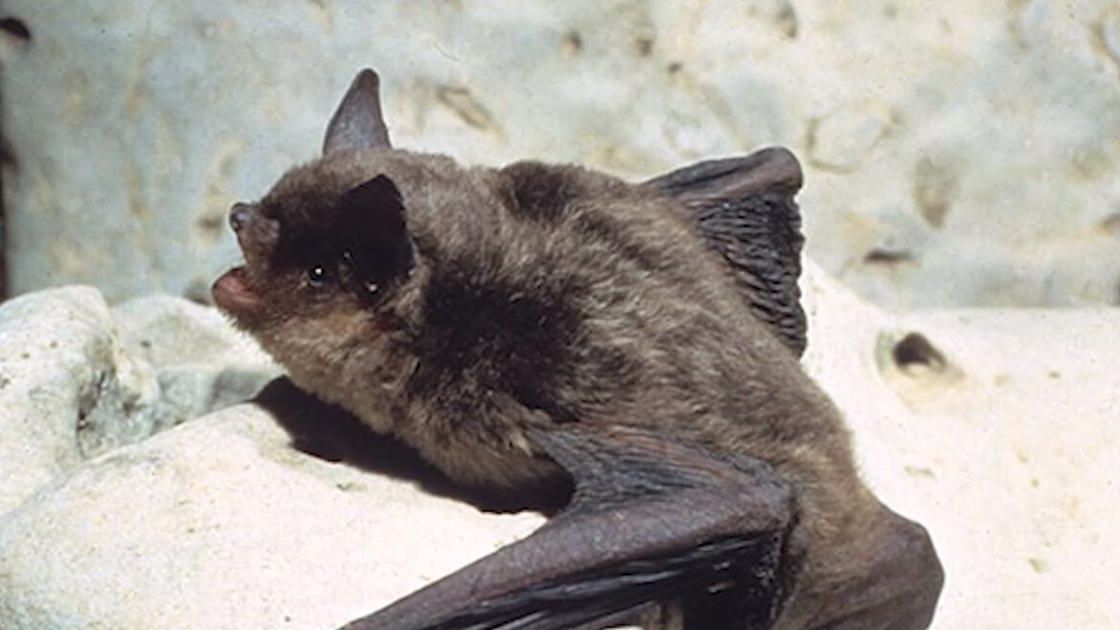LEXINGTON, Ky. — A box beam bridge at an undisclosed location does more than carry traffic over a large creek — it is the first bridge in Kentucky explicitly designed to double as an animal habitat.
What You Need To Know
- Bridge is first in Kentucky specifically designed to be animal habitat
- Design aims to attracts gray bats, an endangered species since 1976
- Construction of bridge was completed in March 2021
- More than 1,100 gray bats using bridge as of this past August
In the fall of 2018, the Kentucky Transportation Cabinet’s Bridging Kentucky team assessed the bridge for potential impacts on gray bats, which the U.S. Fish and Wildlife Service declared an endangered species in 1976. The group noticed heavy staining from guano underneath the bridge, an easy sign the bats were using the bridge.
The gray bat is an endangered species and an essential part of a healthy ecosystem. In addition to caves, bats also roost under bridges that protect them from wind and rain.
“Bats in the United States are threatened because of habitat loss and conversion,” said Andrew Logsdon, ecology and permitting branch manager for the Kentucky Transportation Cabinet (KYTC). “There are lots of conservation measures in place by both resource agencies and state departments of wildlife that are trying to replace habitat, and this is a unique opportunity that we were able to try to do some of ourselves.”

Known as the “bat bridge,” project leaders worked with stakeholders such as the KYTC’s Division of Environmental Analysis, district engineers, the U.S. Fish and Wildlife Service and ecologists to design a bat-friendly structure.“ Traditionally, with parallel box beam bridges, they have tension rods within them that kind of pull the boxes together,” said Drew Powell, bat bridge team member and ecologist with consulting firm ICF Jones and Stokes in Louisville. “Over time, you'll get weather — rain and freeze-and-thaw — and those boxes will expand and the concrete will start to spall a little bit. That's where the bats usually take to.”
Logsdon said the bats were finding cracks and crevices that were safe from wind, predators, and rain, creating an almost cavelike habitat.
“We wanted to recreate those exact gaps, but do it from the very first day that the bridge was built and not have to wait for 30 years of deterioration,” he said.
The design team looked at similar bridge projects in Austin, Texas, that had successfully attracted bats to roost. After construction was completed in March 2021, KYTC, the bat bridge project team waited to see if the bats returned.
“Everything at this point was on design and hoping and wishing, but now the bridge has been constructed,” Powell said. “I will say the first night we came out to do emergent surveys was a little nerve-wracking because the ultimate question was if we rebuild this bridge, to make it fully suitable for roosting, will the bats stay put?”

About 30 minutes before sunset, ecologists sat on different sides of the bridge to see if bats would emerge from the predesigned gaps between the beans.
“It's nice to be able to help an imperiled species of bat that is heavily affected by construction, human interaction, and white-nose syndrome as well,” Powell said. “It's great to be able to aid in that.”
The team counted around 400 bats at the bridge during a June 2021 survey. They also saw bat pups, which is a sign the bridge is home to a maternity colony. During the platform survey this past August, ecologists estimated that more than 1,100 bats are using the bridge.
“Right now, early indications are that bats are back,” Logsdon said. “It’s the species we’re trying to protect, so it's really good news.”
This bridge is the first of its kind for bats in Kentucky, but it could pave the way for similar designs in years to come.
“Going forward, there's no way that we won't look back on this and learn from what we've done,” Logsdon said. “I think it's really going to change the game for how we look at bridge replacements in the future.”
KYTC is not releasing the exact location of the bridge to prevent interference with the habitat.



